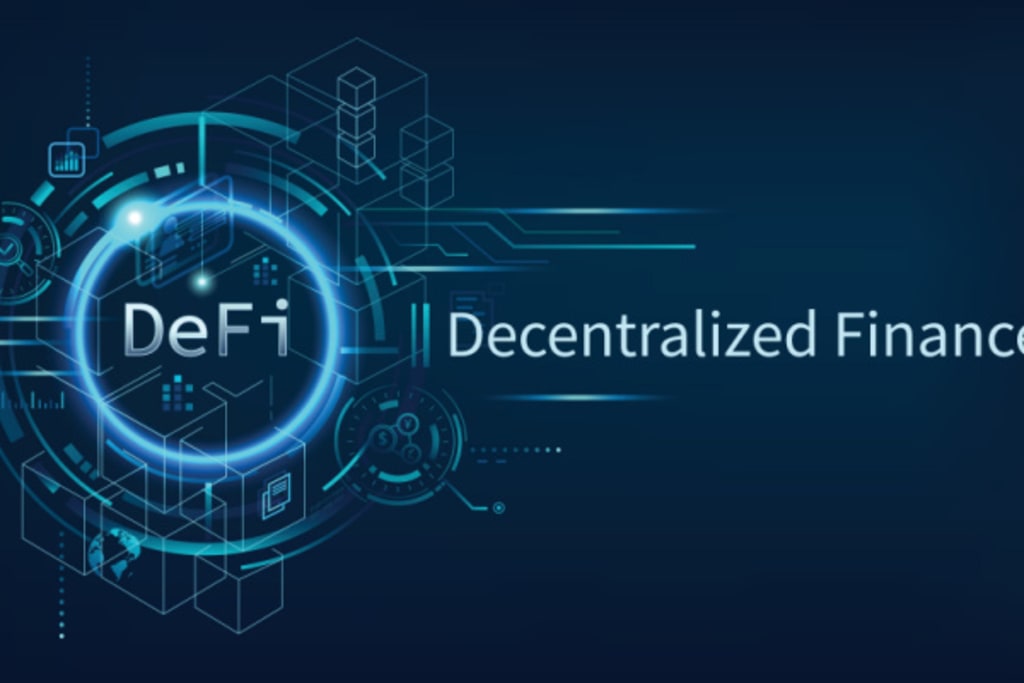The Rise of Decentralized Finance (DeFi): Exploring a New Ecosystem of Financial Applications
How Blockchain Technology is Enabling the Creation of Decentralized Exchanges, Lending Platforms, and Other Financial Services

"Decentralized finance is the future of financial systems, offering transparency, accessibility, and security to users around the world." - Vitalik Buterin, Co-Founder of Ethereum
Introduction:
Decentralized finance, or DeFi, is a new ecosystem of financial applications built on blockchain technology. These applications allow for the creation of decentralized exchanges, lending platforms, and other financial services that operate without intermediaries. DeFi has been gaining traction in recent years, offering users around the world transparency, accessibility, and security in their financial transactions. In this article, we will explore how DeFi works, its benefits and drawbacks, and some common ideas for startups looking to enter the space.

How it Works:
DeFi applications operate on a blockchain, which is a decentralized ledger of all transactions that occur within the network. These transactions are verified by a network of nodes, rather than a central authority such as a bank or government. This means that users can access financial services without relying on intermediaries, such as banks or other financial institutions.
Decentralized Exchanges:
One of the most popular DeFi applications is decentralized exchanges (DEXs), which allow users to trade cryptocurrencies without the need for a central authority. DEXs operate on a peer-to-peer basis, meaning that users can trade directly with each other without relying on a central party to facilitate the transaction.
Lending Platforms:
DeFi also allows for the creation of lending platforms that operate without intermediaries. These platforms enable users to lend and borrow funds without the need for a bank or other financial institution. Lenders earn interest on their loans, while borrowers can access funds without the need for a credit check or other traditional requirements.
Other Financial Services:
DeFi also offers a range of other financial services, including prediction markets, insurance, and asset management. These services operate in a decentralized manner, providing users with greater transparency and control over their financial transactions.
Merits:
DeFi offers a range of benefits over traditional financial systems. These benefits include greater transparency, accessibility, and security for users. DeFi applications operate on a blockchain, which is transparent and immutable, meaning that all transactions are recorded on a public ledger that can be audited by anyone. This offers users greater visibility into financial transactions and reduces the risk of fraud or corruption. Additionally, DeFi applications can be accessed by anyone with an internet connection, regardless of their location or access to traditional financial services. Finally, DeFi offers greater security for users, as transactions are verified by a network of nodes rather than a central authority.
Demerits:
While DeFi offers many benefits, it also has its drawbacks. One of the main challenges facing DeFi is the lack of regulatory oversight. Because DeFi applications operate without intermediaries, it can be difficult for regulators to monitor and enforce compliance with financial regulations. Additionally, DeFi applications can be subject to security risks, such as hacks or other cyberattacks. Finally, DeFi is still a relatively new technology, and there are risks associated with investing in new and untested projects.
Common Ideas for Start-Ups:
Some common ideas for startups looking to enter the DeFi space include creating new decentralized exchanges, developing lending platforms, and exploring new financial services such as prediction markets or insurance. Additionally, startups can focus on developing new infrastructure or tools to support the DeFi ecosystem, such as wallets or analytics platforms.
References:
Related Facts:
- DeFi has grown exponentially in recent years, with the total value locked in DeFi protocols surpassing $100 billion in August 2021.
- The growth of DeFi has been driven in part by the rise of decentralized exchanges, which have seen a surge in trading volume.
- DeFi has the potential to disrupt traditional financial systems, offering users greater control over their financial transactions and reducing the need for intermediaries.
Summary:
- Decentralized finance, or DeFi, is a new ecosystem of financial applications built on blockchain technology.
- These applications allow for the creation of decentralized exchanges, lending platforms, and other financial services that operate without intermediaries.
- DeFi offers a range of benefits over traditional financial systems, including greater transparency, accessibility, and security for users.
- However, it also has its drawbacks, such as the lack of regulatory oversight and security risks. Despite these challenges, DeFi has the potential to disrupt traditional financial systems and offer users greater control over their financial transactions.
About the Creator
RAJA LAKSHMI R
Experienced blockchain developer with a track record of creating decentralized applications and smart contracts on various platforms, including Ethereum. Skilled in Solidity ,such as DeFi, NFTs, and layer 2 scaling solutions.
Enjoyed the story? Support the Creator.
Subscribe for free to receive all their stories in your feed. You could also pledge your support or give them a one-off tip, letting them know you appreciate their work.





Comments
There are no comments for this story
Be the first to respond and start the conversation.